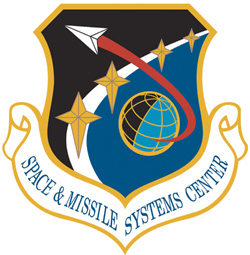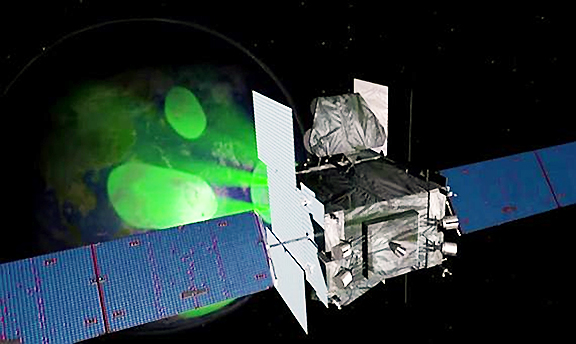
Wideband Global SATCOM (WGS)-11+ is a Space and Missile Systems (SMC) Center Pacesetter for the rapid application and fielding of commercial technology.

The SMC Production Corps and Portfolio Architect’s Mission System Integration team jointly championed a successful first-ever, cross-corps Systems Requirements Review (SRR) to help the Government and Boeing reach a mutual agreement on a system performance specification to satisfy warfighter needs quickly.
The WGS program office, leveraging enterprise partnerships and a collaborative culture with Army, Navy, and Boeing systems engineers, worked closely together to ensure the system’s technical baseline will maximize value to the warfighter on an aggressive 5-year schedule.

Artistic rendition of WGS satellite. Image is courtesy of Boeing.
The WGS team, embedded at the Boeing facility, has been able to apply lessons learned from extensive testing performed by a similar commercial space program utilizing the same digital payload technologies. With SRR complete, the WGS-11+ team has initiated production and prototyping of Pathfinder hardware units to reduce risk for the final production build on its “Road to Preliminary Design Review” campaign.
WGS capability evolves significantly with each generation of spacecraft. WGS-11+ adapts innovative technologies to provide more coverage beams, more beam formed bandwidth and more frequency re-use than heritage systems. WGS-11+ will be capable of forming unique coverage areas anywhere within the field of regard—each sized optimally as mission needs demand. The satellite will have much greater inherent resilience to threats than prior vehicles.
The ability to provide seamless broadband interconnectivity for X-band and Ka-band users, and features to operate in a contested environment—provide the global responsiveness for U.S. and Allied Forces to support missions ranging from warfighting to humanitarian relief efforts. Additionally, the system remains a viable government host platform for rapid prototyping and additional enhancements with mission partners are being considered.
Colonel John Dukes, Chief of the Geosynchronous/Polar Division, SMC Production Corps, said the resilient design will deliver Combatant Commanders twice the mission capability through contested environments—improving capacity and coverage to soldiers, sailors, airmen and marines.
Dr. Mark Peterson, WGS Aerospace Platform lead, noted that WGS-11+ enhances operational flexibility and performance to better serve the warfighter—the system will provide more coverage beams than the entire existing WGS constellation.
Major Brandon Castillo, WGS-11+ Program Manager, added that SMC is excited to deliver this game-changing capability to the warfighter.
Boeing developed a new variant of its 702 satellite for the WGS-11 addition to the constellation, one that offers greater bandwidth efficiency and signal power than previous satellites in the fleet.
Advances in Boeing digital satellite technology mean WGS-11 will deliver hundreds of coverage beams and provide a more flexible and efficient use of bandwidth. These innovations will enable the spacecraft to support more users in theater and allow dedicated beams to follow aircraft in flight.
Troy Dawson, Boeing VP, Government Satellite Systems, said that WGS-11 incorporates the latest advances in Boeing commercial satellite technology combined with a resilient and robust design specifically for military use in contested environments, with delivery of this critically important asset to the U.S. Air Force in 2024.

